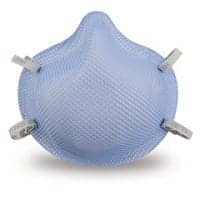Influenza A virus (IAV) can work its way through the protective mucus net to both infect respiratory cells and then later cut its way out to infect other cells. According to an open-access study published in Virology Journal, the bug is capable of penetrating the protective layer of mucus by cleaving sialic acids (Sias) from human salivary mucins (HSM) but not from purified porcine submaxillary mucins (PSM), and binding to HSM but not to PSM.
“The airway’s mucus layer is constantly being shed and renewed, within a couple of hours the entire layer is replaced by a new layer,” said first author Miriam Cohen, PhD. “A drug or compound that slows down neuraminidase activity rather than completely inhibit its activity will suffice to enhance the natural protective effect of mucus and prevent infection.”
Investigators hope the findings will lead to new drugs or therapies that more effectively inhibit viral activity, and perhaps prevent some flu infections altogether.









